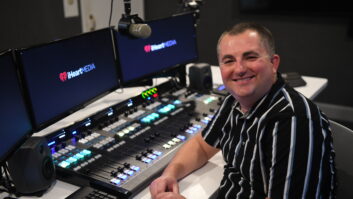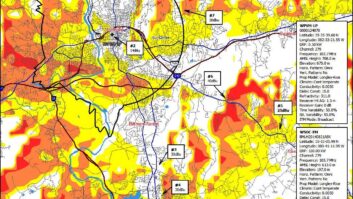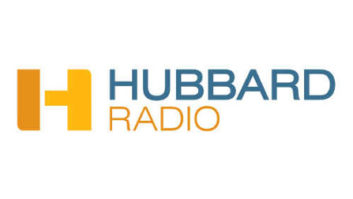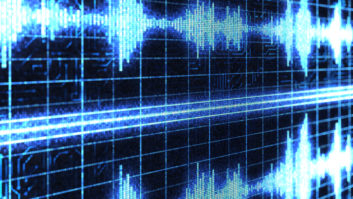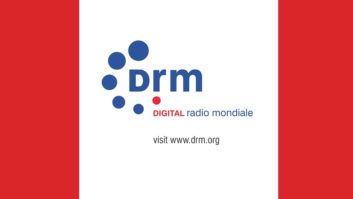WASHINGTON Terrestrial digital radio has moved from the theoretical to the real. With early implementation have come new questions. Radio people – and all Americans – have an opportunity to tell the FCC what they think about in-band, on-channel digital radio between now and July.
The FCC has released the text of its Further Notice in the IBOC rulemaking , offering insight into what the agency wants to know as it finalizes ground rules under which radio will operate in digital for years to come.
Here are excerpts from the FCC notice. In some cases, original punctuation and capitalization have been edited to make the questions clear in this context. Comments to MM Docket 99-325 are due to the commission on June 16 and replies are due July 16.
Number of Radios – Currently, 108 million U.S. households, or 98 percent of all U.S. households, have a radio device. We estimate that there are, on average, five radios per household or about 500 million receivers. …
We estimate that there are nearly 800 million radio sets in use in the United States.
Conversion Policy – We seek comment on the pace of the analog-to-hybrid-radio conversion and the possibility of an all-digital terrestrial radio system in the future. … what changes in our rules would likely encourage radio stations to convert to a hybrid or an all-digital format. We ask whether the government, the marketplace, or both, should determine the speed of conversion from analog to hybrid, and eventually, to digital radio service.
High-Definition Digital Audio Broadcasting – Should (the FCC) require broadcasters to provide a minimum amount of high-definition audio and, if so, what minimum amount should be required? The public may be served by such a policy because radio stations would provide a free programming alternative to satellite radio and compact discs.
We also seek comment on the amount of capacity necessary to allow radio stations to broadcast a high-quality digital signal and permit the introduction of new datacasting and supplemental audio services. If we adopt a high-definition service requirement, should we have separate rules for AM and FM stations?
How many audio streams (can) a radio station transmit using IBOC without causing interference or degrading audio quality? Will the availability of additional audio streams spur public demand for digital audio receivers?
Datacasting – Should (the FCC) adopt a flexible policy permitting radio stations to produce and distribute any and all types of datacasting services? Alternatively, are there certain types of services that a radio station must provide, such as enhanced emergency alerts, before it is permitted to offer other data services? Are there certain services that should be prohibited? …
As for noncommercial radio stations, we seek comment on what SCA services would be inconsistent with the public broadcasting responsibilities of hybrid or all-digital noncommercial educational stations.
DAB interference with analog SCA services has been an issue in this proceeding. Ibiquity performed field tests, which showed that, in some circumstances, analog SCA receivers may receive significant new interference from IBOC stations operating on second-adjacent channels.
Following the tests, NPR commissioned a study using average receiver performance to estimate the number of listeners potentially affected by additional interference from IBOC in the top 16 radio markets. The results show that, on average, additional interference from IBOC could affect 2.6 percent of eligible receivers within an FM station’s service area.
(In the DAB Report and Order), we raised concerns about this level of interference and its potential impact on radio reading services. We now seek comment on measures to protect established SCA services from interference.
Subscription Services – Should we allow for subscription services as long as the licensee provides at least one free digital audio stream, as we do for digital television? … We seek comment on whether we should impose spectrum fees for that portion of the spectrum used by broadcasters to provide subscription services.
Equipment Issues – How would the adoption of a high-definition audio requirement affect receiver manufacturers? Would current receiver specs need to be changed if we permit multicasting or subscription services?
Public-Interest Obligations – If a broadcaster chooses to provide multiple digital audio streams, how should public-interest obligations apply? We also seek comment on how certain public-interest obligations may be applied to subscription-based DAB services.
Emergency Alert System – We tentatively conclude that it is in the public interest to apply the rules provided in Section 73.1250 to all audio streams broadcast by a radio station. … We realize that by requiring AM and FM radio broadcast stations to comply with Section 73.1250 of our rules for all audio streams (both analog and DAB), such stations may have to update and/or replace their EAS decoders to accommodate the digital portion of the stream.
We seek comment on the costs and timing involved in such compliance (for broadcasters and manufacturers).
AM nighttime authorization – The staff has issued a Public Notice seeking comment on NAB’s recommendations and proposing that AM stations who wish to implement nighttime IBOC service immediately do so under the commission’s STA procedures. We request comment here on expansion of interim IBOC procedures to allow all AM stations to implement IBOC service at night without prior authority, as NAB proposes. How else can we help facilitate improvement in the IBOC standard so that AM digital radio service can be received throughout the day and night?
Interference – In the interest of striking a balance between interference concerns and the strong interest of maximizing coverage, we adopted in the DAB R&O a three-pronged approach to the issue of primary sideband power levels for AM. … When interference problems are anticipated prior to commencement of interim IBOC operations, or when actual interference occurs, we permit licensees to adjust the power level of the primary digital subcarriers downward by as much as 6 dB. Licensees are required to notify the commission of any such power adjustments.
In cases in which the hybrid AM IBOC operation of one station results in complaints of actual interference within another station’s protected service contour and the respective licensees are unable to reach agreement on a voluntary power reduction, we may order power reductions for the primary digital carriers or, in extreme cases, termination of interim IBOC operation. In such cases, an affected station may file an interference complaint with the commission.
This complaint must describe any test measures used to identify IBOC-related interference and fully document the extent of such interference. The Media Bureau is charged with resolving each complaint within 90 days.
In the event the bureau fails to issue a decision within 90 days of the date on which a complaint is filed, we held that the interfering station shall reduce immediately its primary digital subcarrier power level by 6 dB.
We seek comment on whether this complaint process is working, and, if so, whether we should make the process permanent when final IBOC standards are adopted.
Patents – In earlier stages of this proceeding, many parties stated that adoption of Ibiquity’s IBOC system would require the use of certain patented technologies. They expressed concern that the commission’s endorsement of the Ibiquity system will create an opportunity for these patent holders to impose excessive licensing fees on broadcasters and listeners who have no alternative source for the technology.
In response, Ibiquity agreed to abide by the guidelines common to open standards, which require that licenses be available to all parties on fair terms. … We seek comment on Ibiquity’s conduct during the interim period (and) on whether this matter needs to be further addressed now or whether we should wait until radio station conversion has progressed to a point at which digital receivers have substantially penetrated the market.
Digital Audio Content Control – It appears likely that future digital audio broadcast receivers will include advanced features such as digital recorders capable of storing audio content and that digital audio broadcast transmissions are likely to include specific song identifications in the “metadata” within the digital data stream. Using this data, it may be possible to have a recording device automatically search for and record a large amount of the music of an individual artist or group or find and record particular specified song titles to the extent the songs are broadcast locally. …
RIAA expresses concern that the launch of digital audio broadcasting, in an unencrypted manner, will permit consumers to “exploit” recorded music in ways that “ignore the intellectual property interests” of the recording labels and artists and deprive them of legitimate compensation.
Although no specific proposal for action has been submitted to the commission, we are mindful that certain available options may be extremely difficult to implement later after a significant base of equipment has been deployed and consumer expectations have developed. … We ask whether the concerns raised by RIAA warrant commission action either in terms of the technical standards that govern the service or the rules that govern the conduct of digital audio broadcasters.
We seek specific comment on two central issues: (1) does a problem exist that requires governmental intervention; and (2) to what extent can, and should, the commission involve itself in this matter. … Is the copying of DAB content for noncommercial use by consumers a threat to recording artists and copyright holders?
What evidence is there that injury has been, or will be, incurred? For example, what economic injuries have recording artists suffered in countries, such as Great Britain, where DAB is now commonplace? Is the problem of home copying limited to DAB or does the alleged threat extend to SDARS and analog audio content converted to a digital format?
What are the possible solutions to the matters raised by RIAA? We note that Congress has addressed certain issues relating to the recording of broadcast music through adoption of the Audio Home Recording Act of 1992. We seek comment on the relationship between this Act and any action the commission might be requested to take.





